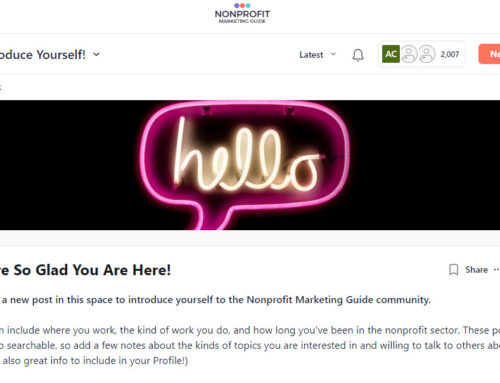 Being relevant in the lives of your nonprofit’s supporters doesn’t usually happen by accident. Use this checklist to determine if you are doing what it takes to be relevant. The more you agree with these statements, the better!
Being relevant in the lives of your nonprofit’s supporters doesn’t usually happen by accident. Use this checklist to determine if you are doing what it takes to be relevant. The more you agree with these statements, the better!
1. We know and understand the people we are communicating with.
We have moved well beyond trying to reach “everyone” or the “general public” and focus our messaging on specific groups or types of people. We have also developed personas to represent these people.
2. We regularly and systematically listen to their concerns, ideas, issues, compliments, and complaints.
Using many different communications channels (online, offline, in person) and tools (survey, focus groups, polls, social media comments, etc.), we are constantly listening to our participants and supporters and learning what’s important to them now.
3. We segment our lists so that people get the information that is most relevant to them.
We use technology to deliver the right messages to the right people at the right time (e.g. people who have already RSVPd for our event are not constantly reminded to register for it, or monthly donors receive different communications than first-time donors.)
4. We have a system in place to make changes to our editorial calendar so that we can be more responsive (e.g. daily or weekly editorial meetings or the ability to quickly check in with decisionmakers).
While we plan our messaging in advance, we also have a functioning system in place that allows for real-time (or close) adjustments so that we can be more responsive to what’s happening in the world around us and to what our community is talking about.
5. Staff are empowered to respond to typical (and perhaps not so typical) day-to-day questions and comments via social media.
We do not attempt to tightly control our message or our messengers, but rather train and trust our staff to represent us well.
6. Program, fundraising, marketing, and executive staff communicate with each other openly and freely, with a spirit of common purpose.
We try hard to avoid silos or turf battles and instead to bring the expertise of each department to our shared goals.
7. We are encouraged to experiment and learn from failures, rather than always playing it safe.
We know that we are living and working in a dynamic media environment that changes quickly and that many of the “rules” and “standards” of communications don’t hold true anymore. We are encouraged to try new things to see what works for us. Failure is only bad if we don’t learn anything from the experience. We don’t make communications decisions out of fear.
8. We know that great communication takes time, talent, and treasure.
We are prepared to invest both the staff time and the financial resources into our marketing strategy. Where we have gaps in skills or knowledge, we will fill them with consultants or professional development for our staff.
What do you think? How is your nonprofit doing on this checklist?






